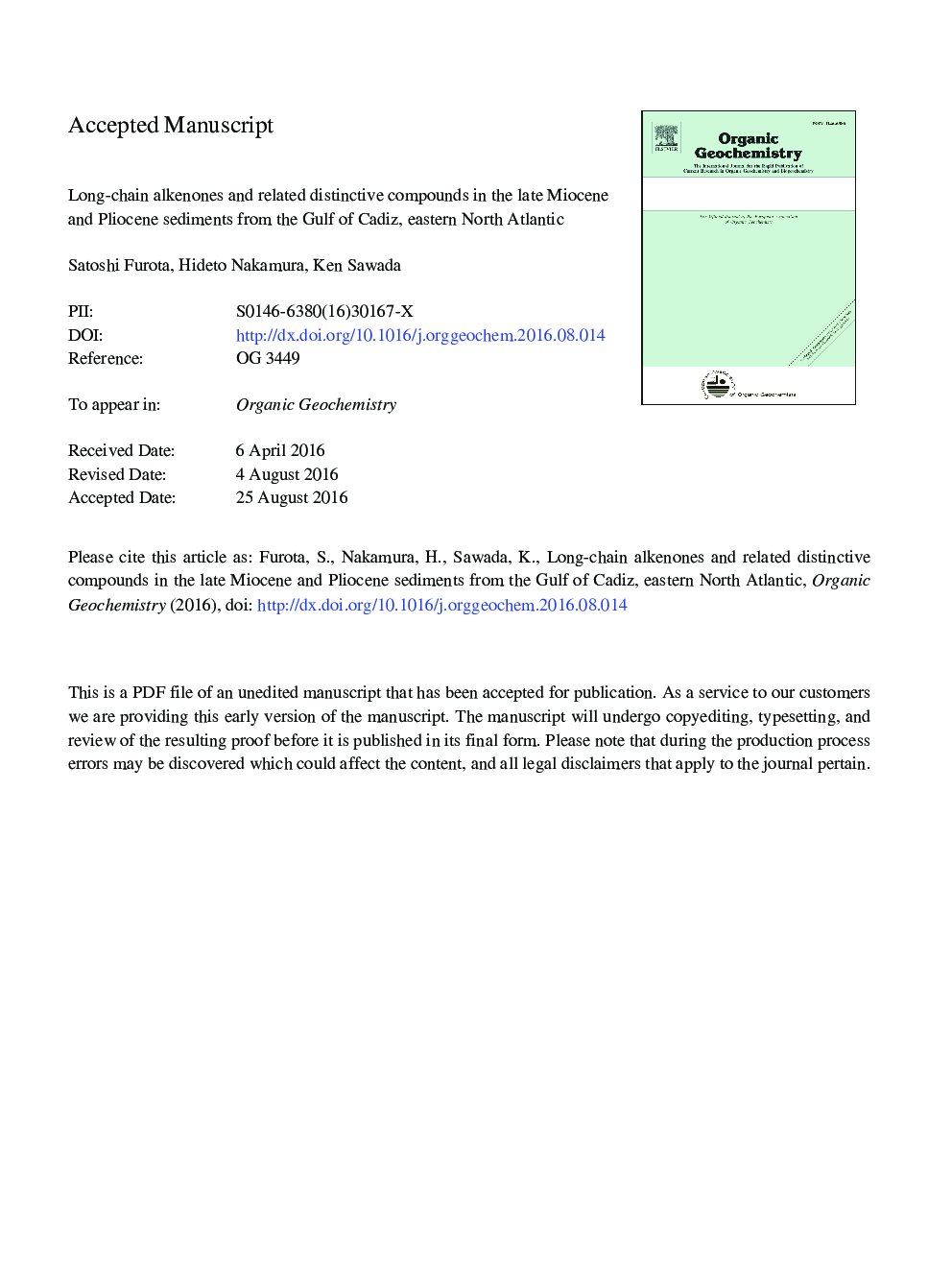| Article ID | Journal | Published Year | Pages | File Type |
|---|---|---|---|---|
| 5161496 | Organic Geochemistry | 2016 | 45 Pages |
Abstract
Long-chain alkenones and related compounds were analyzed in Miocene and Pliocene sediments from the Gulf of Cadiz (GoC) in the eastern North Atlantic, which were obtained by Integrated Ocean Drilling Project (IODP) Expedition 339. Both GC and GC-MS analyses using non- and mid-polar columns were performed on the sediments. Isomeric cis-C37 alkenones were identified along with common trans-C37-C39 alkenones. The use of a mid-polar column resulted in the complete separation of the trans-C37 tri-unsaturated alkenone and the cis-C37 di-unsaturated alkenone and thus contributed to a more precise estimation of the alkenone-based paleotemperature. The reconstructed SSTs range from 26 to 28 °C during ca. 6-3 Ma in the GoC. These variations are concordant with global climate change during the period, particularly the Pliocene Climatic Optimum and the onset of sustained ice sheet growth in the northern hemisphere. The concentrations of C37-C39 alkenones and the C37/C38 alkenone ratios are lower during the late Miocene to early Pliocene and increase after ca. 4.2 Ma, which corresponds to the taxonomic change of the plausible alkenone producers from the genus Reticulofenestra to genera Gephyrocapsa and Reticulofenestra. Moreover, a C38 di-unsaturated alkene-2,36-dione was tentatively identified. Variations in the concentrations of a tentatively identified alkenedione are almost synchronous with those of other alkenones, and their relative abundances decrease after ca. 4.2 Ma. These results suggest that the alkenedione originated from the ancient alkenone producers such as the genus Reticulofenestra.
Keywords
Related Topics
Physical Sciences and Engineering
Chemistry
Organic Chemistry
Authors
Satoshi Furota, Hideto Nakamura, Ken Sawada,
